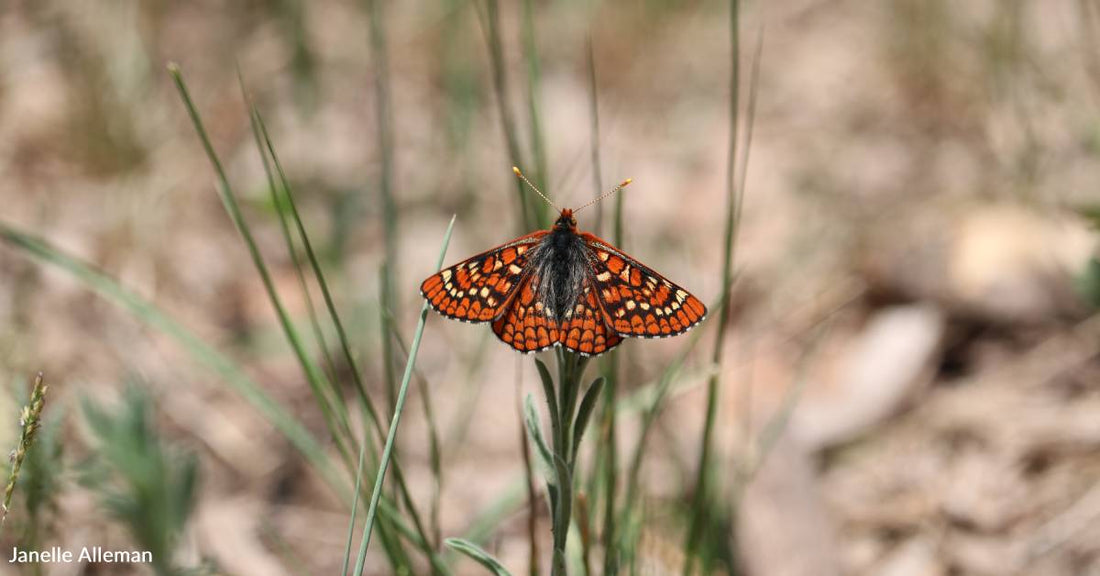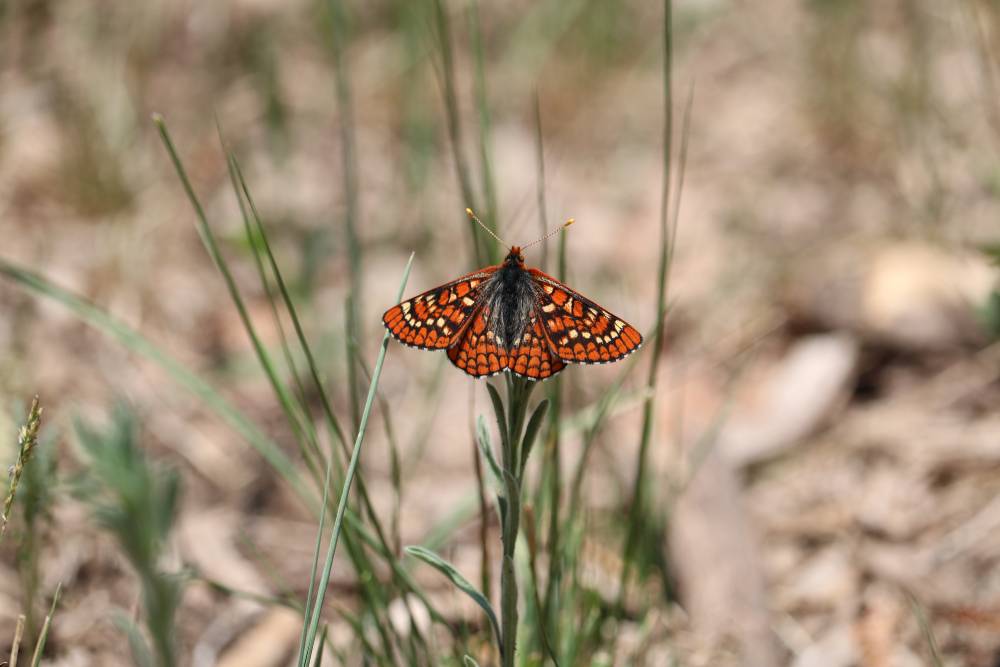Pollinating Butterfly Listed as Endangered by the U.S. Fish and Wildlife Service
Michelle Milliken
A rare pollinator from the southwestern United States has officially been listed as endangered.
This week, the United States Fish and Wildlife Service (USFWS) said it had finalized listing of the Sacramento Mountains checkerspot butterfly as endangered under the Endangered Species Act. The agency noted that a proposal for designation of critical habitat would be announced later. The two-inch wide butterfly is found only among a few high-elevation meadows in the Sacramento Mountains on the Lincoln National Forest, located in southeastern New Mexico.
Amy Lueders, USFWS Southwest Regional Director, says, "The Sacramento Mountains checkerspot butterfly is among a group of pollinators – including bees, bats and birds – experiencing serious declines across the country. Protecting pollinators is vitally important to maintaining the natural mechanisms that sustain us and our world."
 SACRAMENTO MOUNTAINS CHECKERSPOT BUTTERFLY. PHOTO: JANELLE ALLEMAN
SACRAMENTO MOUNTAINS CHECKERSPOT BUTTERFLY. PHOTO: JANELLE ALLEMAN
Pollinator loss threatens our food supply, agricultural economy, and our planet's biodiversity, and may even lead to excess deaths due to a lower amount of healthy food.
The Sacramento Mountains checkerspot butterfly uses just one plant - the New Mexico beardtongue - to lay its eggs. However, its habitat has been negatively impacted by incompatible grazing, human recreation, invasive and non-native plants, altered fire cycles, and climate change. As part of this listing, the USFWS will be working with partners to help restore the butterfly's habitat within the Lincoln National Forest. They hope to determine which habitat is key in the species' conservation and to make a proposal for critical habitat designation by the end of the year.
Wildlife conservation groups say the listing is essential.
Tierra Curry, a senior scientist with the Center for Biological Diversity, says, "The Sacramento Mountains checkerspot butterfly is one of the most endangered animals in the world, so it’s welcome news that it finally has protection. Still, it’s going to take heroic efforts to save this species, because threats have only intensified over the past two decades of shameful hemming and hawing."
 SACRAMENTO MOUNTAINS CHECKERSPOT BUTTERFLY. PHOTO: USFWS
SACRAMENTO MOUNTAINS CHECKERSPOT BUTTERFLY. PHOTO: USFWS
The center notes that in 2021 surveys, only 23 adults were found among two small populations. In a news release, they also said they had sent a scientific petition to the USFWS in 1999, which ultimately led to a 2001 proposal to protect the species. However, it was withdrawn in 2004.
Would you like to do your part to help declining pollinator populations? Learn one way you can help here.

